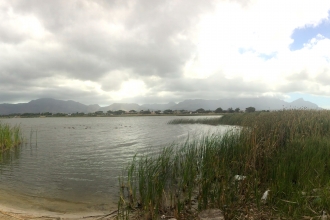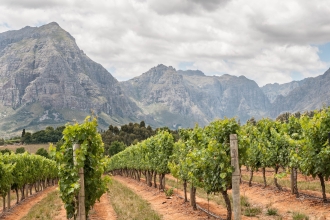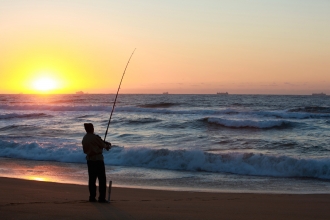
Economists hail Cape wetland conservation
Local economics researchers have hailed the announcement this month that the City of Cape Town will reverse a decision to sell a section of the Princess Vlei wetland near Diep River to developers, who…

Local economics researchers have hailed the announcement this month that the City of Cape Town will reverse a decision to sell a section of the Princess Vlei wetland near Diep River to developers, who…

CAPE TOWN, SOUTH AFRICA The water flowing down the Berg River, towards the Cape West Coast and Saldanha Bay, is the lifeblood of two competing sectors: heavy industry, and agriculture. But as demand…
African wildlife conservation has been transformed, shifting from a traditional, state-managed
government approach to a broader governance approach with a wide range of actors designing and
implementing wildlife policy. The most widely popularized approach has been that of community managed
nature conservancies. The knowledge of how institutions function in relation to humans
and their use of the environment is critical to the design and implementation of effective conservation.
South Africa, a main food exporter in SADC, is characterised by a dual agricultural economy consisting of a well-developed commercial sector and smallholder, often subsistence, farming. Using the Ricardian cross-sectional framework, we examine the impact of climate change on a nationwide sample of crop, horticulture, livestock and mixed commercial farming systems.
Extant literature on Joint Forest Management (JFM) impact evaluation has concluded that it generally does not provide sufficient incentives to justify the costs that forest use restrictions impose on local people. However, there is a dearth of evidence concerning whether alternative JFM intervention with improved market linkages for non-timber forest products has similar implications.
Inshore line fish stocks are severely depleted in South Africa. Although management efforts have addressed pressures from the commercial and subsistence sectors, management of the recreational sector still needs to be addressed. Evidence suggests that spatial management measures would be more successful than traditional size and bag limits. In order to inform a spatial approach, this study investigated the determinants of temporal and spatial variability in angler distribution around the coast.
Zimbabwe’s community-based conservation model, which brings together peasant farmers in a tourism-focused approach to wildlife management, has not reduced the community’s poaching pressure on wildlife stocks in the protected area of Gonarezhou National Park (GNP) as much as intended.
Recreational angling in South Africa is not well monitored, even though recreational fishing contributes to over-exploitation of line fish stocks. This is because authorities don’t have the resources or political will to patrol the entire coastline. This study shows that anglers tend to seek out fishing spots where they are likely to catch the most fish. If enforcement officials target these ‘hotspots’, they can monitor whether anglers are adhering to their permit conditions, which limit the number and size of fish that they are allowed to catch.
The Kogelberg Biosphere Reserve is a 100 km long coastal stretch of towering mountains and craggy beaches about an hour’s drive east of Cape Town. The dramatic landscape, rare botanical diversity and ocean ‘playground’ are big drawcards for tourists, and contribute to property values. A recent study of the ‘amenity’ value of this stretch of coastline shows that many local visitors regard it as more desirable to visit than other stretches of South African coastline, and many are return visitors. Homeowners are willing to pay a premium for properties with sea views or access.

Anglers along the South African coastline choose their fishing spots on the likelihood of catching the most fish, rather than how far they have to walk to get to the spot, or weather conditions…